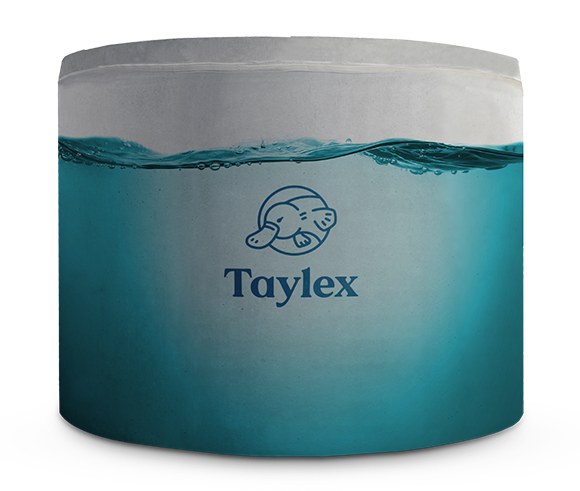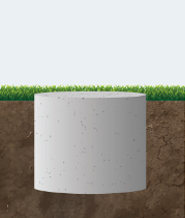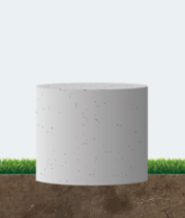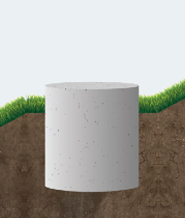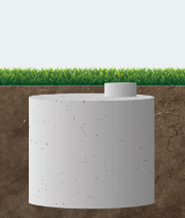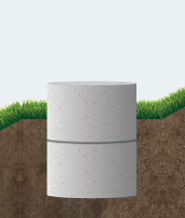Rainwater Tanks FAQs
How Much Does Rainwater Tank Cost?
The cost of rainwater tanks in Australia varies widely based on factors such as tank size, material, brand, installation, and additional components. Small tanks (500-2,000L) range from $300 to $1,200, medium tanks (2,000-5,000L) cost between $800 and $2,500, and large tanks (10,000-50,000L) can range from $2,500 to $15,000 or more. The material also affects the price, with polyethene tanks costing $300 to $5,000, steel tanks $1,000 to $8,000, concrete tanks $2,000 to $10,000, and fibreglass tanks $1,500 to $7,000. Professional installation adds $500 to $2,000, while essential accessories like pumps ($200 to $1,500), filtration systems ($100 to $1,000), and gutter/diverter systems ($100 to $500) also contribute to the overall cost. For example, a 5,000-litre polyethylene tank with necessary accessories and professional installation might total around $3,200. Additionally, government rebates and incentives can help offset costs, so checking local councils and state government websites for the latest programs is advisable.
How to Stop Algae in Rainwater Tanks?
Prevent algae growth in rainwater tanks with these effective measures:
- Keep the Tank Covered: Reduce sunlight exposure using covered or opaque tanks.
- Install a Light Blocker: Block sunlight from entering the tank by covering inlet pipes with light-blocking materials.
- Regular Cleaning: Periodically scrub the tank to remove sediments, organic residues, and algae.
- Use Algaecides: Algaecide treatments according to manufacturer guidelines to control algae formation.
- Maintain Proper Filtration: Regularly check and maintain the filtration system to ensure it effectively removes contaminants that promote algae growth.
Why Are Rainwater Tanks Good For The Environment?
Rainwater tanks provide significant environmental advantages:
- Water Conservation: They reduce reliance on mains water, conserving freshwater resources and easing strain on water infrastructure.
- Stormwater Management: By capturing rainwater, these tanks minimize stormwater runoff, soil erosion, flooding, and pollution of waterways.
- Energy Savings: Rainwater harvesting uses less energy than mains water treatment and distribution, reducing greenhouse gas emissions.
- Habitat Preservation: Collecting rainwater helps preserve natural habitats and ecosystems by decreasing water extraction from these sources.
How Long Do Rainwater Tanks Last?
The lifespan of rainwater tanks varies based on material, construction quality, maintenance, and environmental conditions:
- Plastic Tanks: These tanks typically last 10 to 20 years as they are influenced by UV exposure, material quality, and regular maintenance.
- Steel Tanks: Proper coating and rust prevention can last 15 to 30 years.
- Concrete Tanks: Their lifespan ranges from 20 to 50 years, depending on construction quality and reinforcement.
- Fibreglass Tanks: These can last 20 to 30 years with minimal maintenance and careful handling.
Are Rainwater Tanks Quality Tested?
Yes! Reputable rainwater tank manufacturers such as Taylex adhere to industry standards and regulations, ensuring their products undergo rigorous testing, including:
- Structural Integrity: Tanks undergo assessment for strength, stability, and ability to withstand loads without deforming.
- Material Durability: Materials undergo evaluation for their durability, UV resistance, and endurance to corrosion, cracking, and weathering.
- Water Tightness: Tanks undergo testing to confirm they are watertight and do not leak under normal conditions.
- Environmental Resistance: Tanks are examined for their ability to resist environmental stressors such as temperature changes, sunlight, and chemical exposure.
How Often Should Rainwater Tanks Be Cleaned?
Rainwater tanks require periodic cleaning to maintain water quality and prevent buildup. Check out these variations:
- General Recommendation: Clean the tank annually, ideally before the rainy season or after periods of heavy use.
- Seasonal Cleaning: After dry periods or low water levels, thoroughly clean to remove sediment and organic residues.
- Visual Inspection: Regularly check the tank for signs like algae growth, sediment buildup, or discolouration, which might suggest a need for more frequent cleaning.
- Water Testing: Conduct periodic tests on rainwater quality to assess for microbes and contaminants.
Can You Drink Rain Water?
Yes, you can drink rainwater. A high-quality rainwater tank like Taylex’s Rainwater Tank can collect, store, and provide good-quality drinking water. However, rainwater can pick up pollutants from the air, roofs, and containers. Use high-quality rainwater tanks and maintain your water catchment system to ensure safety. Before drinking, make sure the rainwater is clear, has little taste or smell, and comes from a well-maintained rainwater system. Learn in detail in our comprehensive blog, “Can you drink rainwater?“
